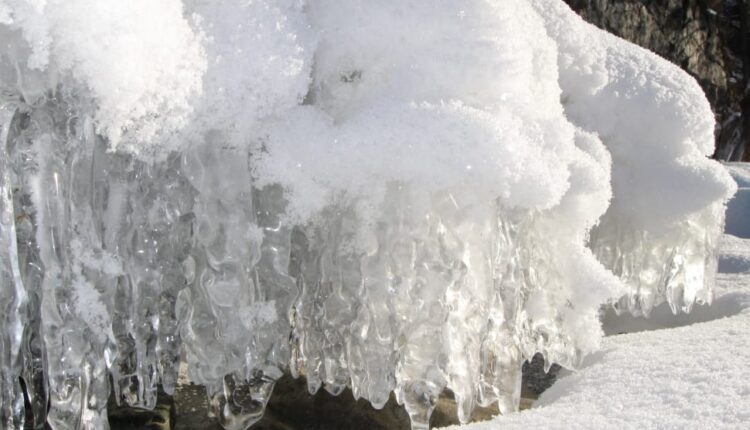Melting of Himalayan Glaciers
GSI has conducted studies on glacier melt by assessing the mass balance of nine glaciers and has also tracked the recession/advance of 76 glaciers
The government has carried out studies and maintains data on the melting of glaciers in the Indian Himalayan region. Several Indian institutes/universities/organizations monitor Himalayan glaciers for various scientific studies, including glacier melt, and have reported accelerated heterogeneous mass loss in Himalayan glaciers.
Melting of Himalayan Glaciers
The average rate of retreat of the Himalayan Hindu Kush glaciers is 14.9 ± 15.1 metres/year (m/y); which varies from 12.7 ± 13.2 m/a in Indus, 15.5 ± 14.4 m/a in Ganga and 20.2 ± 19.7 m/a in the Brahmaputra river basins. However, glaciers in the Karakoram region have shown comparatively less length change (-1.37 ± 22.8 m/yr), indicating stable conditions.
The Ministry of Earth Sciences (MoES), through its National Center for Ocean and Polar Research (NCPOR), has been monitoring six glaciers in the Chandra basin (area 2,437 km2) in the western Himalayas since 2013. A station state-of-the-art field research facility ‘Himansh’ established in the Chandra Basin and operational since 2016 to conduct field experiments and glacier expeditions. The annual mass balance (melt) rate is observed, ranging between -0.3±0.06 equivalent meters of water per year (m w.e.y-1) and -1.13±0.22 mw.e.y-1 during 2013-2020. Similarly, a mean thinning of ~50±11 m with a mean annual mass loss of –1.09±0.32 mw.e. a–1 was observed for the Baspa basin during 2000-2011.
GSI has conducted studies on glacier melt by assessing the mass balance of nine glaciers and has also tracked the recession/advance of 76 glaciers in the Himalayan region. Most Himalayan glaciers are observed to melt or recede at different rates in different regions.
Dokriani Glacier
The Department of Science and Technology (DST) has supported several R&D projects to study Himalayan glaciers under the National Mission for Sustaining the Himalayan Ecosystem (NMSHE) and the National Mission on Strategic Knowledge for Change. Climate (NMSKCC). Mass balance studies conducted for some Himalayan glaciers by the University of Kashmir, University of Sikkim, IISc and WIHG, revealed that most Himalayan glaciers are melting or retreating at variable rates.
WIHG is monitoring some glaciers in Uttarakhand, which reveals that Dokriani Glacier in Bhagirathi Basin is retreating at 15-20 m/a since 1995, while Chorabari Glacier in Mandakini Basin is receding at 9-11 m/a during 2003. 2017. WIHG is also monitoring the Durung-Drung and Pensilungpa glaciers in the Suru Basin, Ladakh, which are retreating at 12 m/y and ~5.6 m/y, respectively. NIH has been conducting several studies for the assessment of runoff from glacier melt at the watershed and basin scales across the Himalayas.
Himalayan river water resources
Glacier melting has significant impact on Himalayan river water resources due to change in glacier basin hydrology, downstream water balance, impact on hydroelectric power stations due to variation in discharge , flash floods and sedimentation. They also increase the risk related to glacier hazards due to increased number and volume of glacial lakes, accelerated flash floods and Glacial Lake Flash Floods (GLOF), impact on agricultural practices in the upper Himalayan region, etc.
The Divecha Center for Climate Change, IISc Bangalore, under the auspices of DST, investigated the Satluj river basin and reported that there will be an increase in the contribution of glacier melt until mid-century and then there will be a decrease. Numerous small glaciers located in the low-lying region of the Satluj basin indicate significant loss in the area until mid-century, creating a water shortage during the summer dry season.
The melting of glaciers is a natural process and cannot be controlled. However, the melting of glaciers increases the risks related to glacier hazards. Several Indian institutes, organizations and universities are monitoring Himalayan glaciers using large-scale remote sensing data to assess calamities associated with melting. Recently, the National Disaster Management Authority (NDMA) in collaboration with the Swiss Development Corporation (SDC), prepared the Guidelines, Compendium and Summary for Policymakers on Glacial Lake Flash Flood Management ( GLOF).
Contact us: If farmers want to share information or experiences related to farming with us, then they can do this by calling us on the phone number 9599273766 or by writing an email to [email protected] or by sending your recording. Through Kisan of India, we will convey your message to the people, because we believe that if the farmers are advanced then the country is happy.



